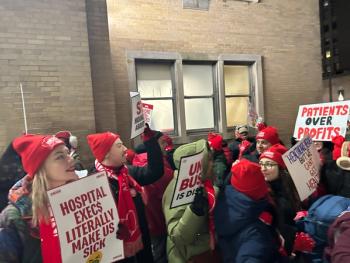
How some rural hospitals succeeded in the COVID-19 pandemic
Hospitals in rural areas face daunting challenges, but their response in the crisis provides useful lessons for all healthcare organizations.
Rural hospitals have dealt with extraordinary challenges in the COVID-19 pandemic.
They have faced severe staffing shortages, which have been exacerbated by the fact that they have less ability to match competitors in pay. Some have projected many
However, some rural hospitals managed to care for COVID-19 patients exceptionally well, and they offer instructive lessons for all healthcare organizations.
Researchers outlined some of the successes and inherent strengths of rural hospitals during the COVID-19 pandemic in a March 22
- Related story:
Why hospitals should be reviewing their pandemic response
Ability to adapt
Rural hospitals possessed one clear advantage during the COVID-19 pandemic. Since rural hospitals have smaller labor pools, many are accustomed to taking on different roles and responsibilities.
“When the pandemic hit, many staff were more open and flexible about getting repurposed or being asked to function in a different capacity, enabling rural hospitals to respond more nimbly than larger urban hospitals,” the authors stated.
Community partnerships
Rural hospitals aren’t just the larger employers in their communities. In some cases, they are among the few large organizations in their regions. As such, community leaders turned to them for guidance and response efforts during the pandemic. Conversely, hospitals were able to tap the help of the communities during shortages of supplies and staff.
For years, some rural hospitals have worked with local governments, police and fire departments in emergency drills, and that work paid off. Plus, some residents in rural areas may feel deeper ties and a stronger sense of duty to help their hospitals, the authors suggested.
Family ties
Those who work at smaller hospitals can become very tight, the authors said. Beyond the size of the hospital and the chance for workers to form close bonds, many rural hospitals offer a collegial work environment, the analysis stated.
“Several hospitals reported a culture that was resilient and cohesive, with individuals who were ready to pitch in and help throughout the organizational hierarchy,” the authors wrote.
- Related story:
Good workers leave hospitals due to bad managers
Communication
Rural hospitals offer workers and leaders the opportunity for more face-to-face communication, a genuine asset during the COVID-19 crisis. When staff can talk directly to each other, there are fewer opportunities for miscommunication.
“One rural hospital used ‘executive rounds’ in which organizational leaders regularly visited and communicated with individual units, helping staff to better deal with exhaustion and fatigue and have an improved grasp of the situational details,” the authors wrote.
Policy suggestions
Federal and state governments must direct more aid to help boost wages for hospital employees in rural areas, the authors wrote.
In addition, federal and state aid should be directed to recruit emergency managers to rural areas.
Many rural hospitals are facing severe financial pressures. During the pandemic, 21 rural hospitals closed, the analysis noted. The federal government’s COVID-19 relief aid has helped keep some rural hospitals afloat, but many are in steep danger of closure.
As many as 900 rural hospitals face the risk of shutting down, according to a report from the
Between 1990 and 2020, 334 rural hospitals closed their doors. The hospital closures had a disproportionate effect on Black and Hispanic populations, according to
Federal and state governments should provide funds to promote joint emergency planning exercises for adjacent rural areas to improve response and foster the exchange of ideas to manage a crisis, the analysis states. The authors also proposed financial incentives to encourage relationships between tertiary care hospitals and rural hospitals.
Rural hospitals in a region should also work together and develop collaborative response plans. If one doctor or nurse is absent in a small, rural hospital, that could keep an emergency department or other hospital unit from opening, the authors note. Hospitals should plan ahead and be prepared to help each other with staffing if needed.
Rural hospitals should also include business and community leaders in regional healthcare coordination efforts.
Mariam Krikorian Atkinson, an assistant professor of healthcare management and policy at Harvard University, is the lead author of the analysis.




























































































